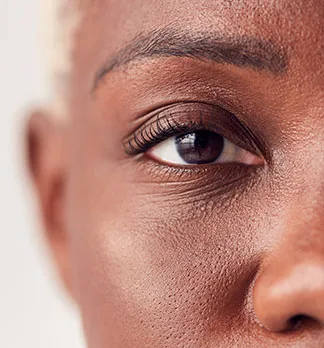Pricing
Cataract surgery replaces the eye’s clouded lens with a new intraocular lens (IOL) to restore clear vision. Complete treatment pricing may very depending on the type of IOL chosen.
Some patients who have had cataract surgery may develop a condition called posterior capsule opacifcation (PCO), commonly known as “secondary cataracts”. A YAG laser treatment can restore clear vision.
Pterygium, sometimes called sufer’s cataract because it often develops after prolonged sun exposure, is a growth of the conjunctiva that extends onto the cornea. An excision with graft procedure is used to treat pterygium.
This procedure removes the outer layers of the cornea in order to treat corneal scarring and certain ocular surface conditions.
Penetrating Keratoplasty, or a PKP corneal transplant, is a surgery to remove a diseased or damaged cornea and replace it with a clear donor cornea. This procedure is used to treat a range of corneal diseases and conditions.
Descemet’s Stripping with Endothelial Keratoplasty (DSEK) and Descemet’s membrane endothelial keratoplasty (DMEK) are each partial thickness corneal transplant surgeries in which the damaged parts of cornea are replaced with donated corneal tissue.
Corneal Cross-Linking (CXL) is an innovative and minimally invasive procedure that uses vitamin B2 (riboflavin) drops and ultraviolet light to strengthen the cornea for patients with Keratoconus or corneal ectasia.
LASIK is a popular vision correction surgery that corrects a range of refractive errors, including nearsightedness and astigmatism, by reshaping the cornea. PRK is a similar procedure that also precisely reshapes the cornea with advanced lasers.
EVO Visian ICL is a vision correction surgery that improves vision with an Implantable Collamer Lens. ICL surgery can correct high levels of myopia and offers many benefits for patients who are candidates.
The toric version of EVO Visian ICL corrects astigmatism as well as myopia with an implantable collamer lens.
Trabeculectomy surgery treats glaucoma by creating new drainage pathways in order to reduce intraocular pressure, with the goal of minmizing vision loss.
The XEN® Gel Stent is a small surgical implant used in aqueous shunt surgery, a minimally invasive surgery to treat glaucoma. The stent helps fluid drain in order to improve intraocular pressure.
Laser Peripheral Iridotomy (LPI) is a treatment that is typically recommended for patietns with narrow-angle glaucoma. This procedure improves intraocular pressure in order to minimize vision loss.
Selective Laser Trabeculoplasty (SLT) is a laser surgery that is used to reduce introcular pressure in order to manage glaucoma.
Most often used to treat strabismus, eye muscle surgery adjusts the tension of the eye muscles in one eye order to improve or correct eye alignment.
Eye muscle surgery, which is often used treat strabismus, this surgery adjusts the tension of the muscles in both eyes in order to improve or correct eye alignment.
Anesthesia may be used for eye exminations in order to ensure the patient’s comfort during certain diagnostic tests.
Nasolacrimal Duct Probe is a diagnostic procedure in which the the valve between the nasolacrimal duct and the nose is opened in order to assess for blockages or other ocular conditions.
Dacryocystorhinostomy is a surgical procedure in which a specialized stent is placed in order to treat a tear duct blockage.
Ectropion, in which the lower eyelid droops and exposes the inner eye tissue, can be treated in a surgical procedure.
Entropion, in which the lower eyelid turns inward and causes eyelashes and skin to rub against the eye, can be treated in a surgical procedure.
A Fasanella-Servat procedure is a surgery to treat a drooping or misaligned eyelid.
Blepharoplasty, also known as eyelid surgery, is a procedure that may be performed for cosmetic or reconstructive purposes. Used to treat eyelid ptosis (drooping eyelid) this surgery can restore a youthful appearance to the eyes.
Eyelid surgery can be combined with a brow lift procedure for comprehensive revitalization of the eye area. Blepharoplasy with brow lift can correct sagging eyebrows and drooping eyelids for a more youthful look.
A chalazion, or blocked oil gland in the eye, can be treated in a simple drainage procedure.
The temporal artery is a blood vessel near the eye. A biopsy may be performed to diagnose or confirm a number of conditions.
Permanent eyelash removal may be performed in cases where the eyelashes grow inward and irritate the eye.
The punctal glands, or tear ducts, may be closed or plugged in order to retain moisture in the eye and treat dry eye disease.
Benign eyelid lesions can be removed in a simple excision surgery.
Pars plana vitrectomy (PPV) with scleral buckle is a type of vitreoretinal surgery used to treat retinal and vitrerous conditions, such as retinal detachment.
Pars plana vitrectomy (PPV) with air, gas, or oil is a type of vitreoretinal surgery used to treat retinal and vitrerous conditions, such as retinal detachment.
Panretinal photocoagulation (PRP) is a laser eye surgery that may be used to treat retinal ischemic disease.
Focal Photocoagulation is a laser eye surgery that may be used to treat retinal conditions such as macular edema.







